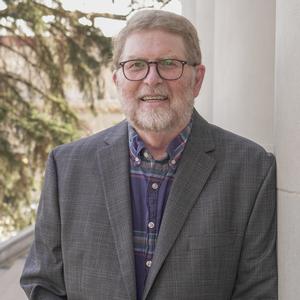Office: MRB 381
Phone: (970) 491-5440
Google Scholar: https://scholar.google.com/citations?user=jLgW9I8AAAAJ&hl=en
Education
- Ph.D., University of Wisconsin-Madison
About
The long-term goal of my laboratory has been to understand how the structural dynamics of the chromatin fiber in vitro relate to interphase chromosome structure and function in the nucleus. A polymer chain of nucleosomes (i.e., the chromatin fiber) in solution is in equilibrium between an extended 10 nm conformation, folded 30 nm structures, and large oligomeric complexes. Much of my attention—and that of others—previously has focused on folding of chromatin into 30 nm fibers. More recently, we have become interested in the oligomeric complexes that result from chromatin fiber self-association. A 12-mer nucleosomal array reconstituted in vitro from pure histone and DNA components self-assembles under physiological ionic conditions into supramolecular oligomers that span the size range of the globular chromosomal domains found in vivo. The oligomers are structured as globules, and the individual nucleosome arrays within the oligomers are packaged as extended 10-nm fibers. In situ experiments demonstrated that the chromatin fiber-chromatin fiber interactions that stabilize interphase chromosome structure in the nucleus are the same interactions that stabilize chromatin oligomers in vitro. These results indicate that the chromatin oligomers mimic the key structural features of a packaged interphase chromosome in the nucleus, and as such provide the first defined model system for studying chromosome folding mechanisms in vitro. We are currently examining the role of the core histones, linker DNA, and chromatin architectural proteins in chromatin oligomer structure and function. Over the years I have also maintained a strong interest in the biochemistry and biophysics of the Rett syndrome protein, MeCP2, and the role of protein-protein interactions in linker histone action.
Publications
- Post-translational modifications and chromatin dynamics.Essays in Biochemistry 63, 89-96 , 2019
- The 10-nm fiber and its relation to interphase chromosome organization.Biochem. Soc. Trans. 46, 67-76., 2018
- The elongation factor Spn1 is a multifunctional chromatin binding protein.Nucleic Acids Res. 46, 2321-2334., 2017
- Nucleosomal arrays self-assemble into supramolecular globular structures lacking 30-nm fibers. EMBO J. 35, 1115-32. , 2016
- Linker histones and protein-protein interactions.Biochim Biophys ACTA, pii: S1874-9399(15)00210-2., 2016
- Acetylation mimics within a single nucleosome alter local DNA accessibility in compacted nucleosome arrays. Sci. Rep. 6, 34808., 2016
- Chromatin folding and DNA replication inhibition mediated by a highly antitumor-active tetrazolato-bridged dinuclear platinum(II) complex. Sci Rep. 6, 24712, 2016
- Proteomic characterization of the nucleolar linker histone interaction network. J. Mol. Biol., 427, 2056-71., 2015
- Sedimentation velocity analysis of large oligomeric chromatin complexes using interference detection. Meth. Enzmol. 562, 349-62., 2015
- Conformational dynamics of the chromatin fiber in solution: determinants, mechanisms and functions.Ann. Rev. Biophys. Biomol. Str. 31, 361-392., 2002

